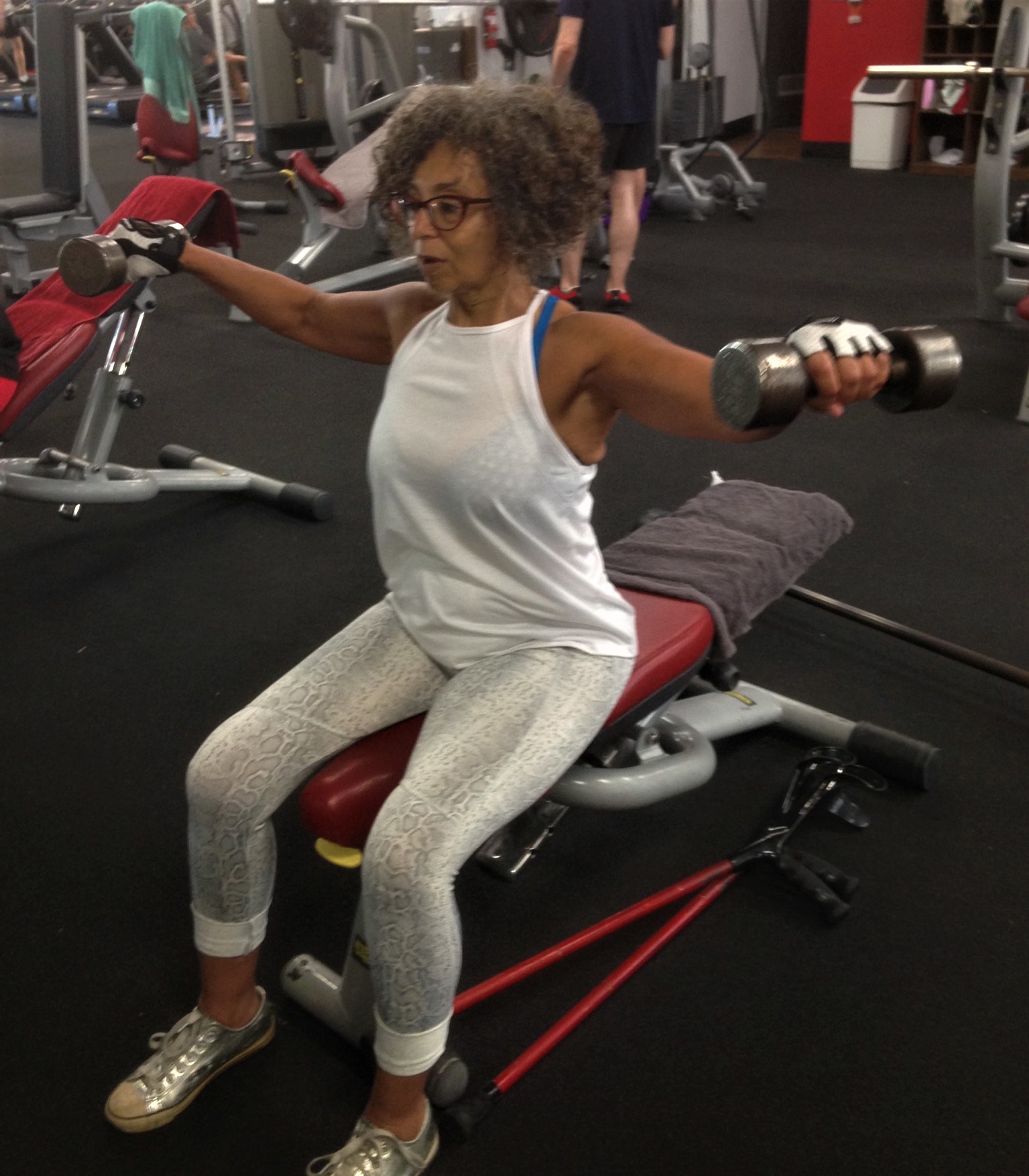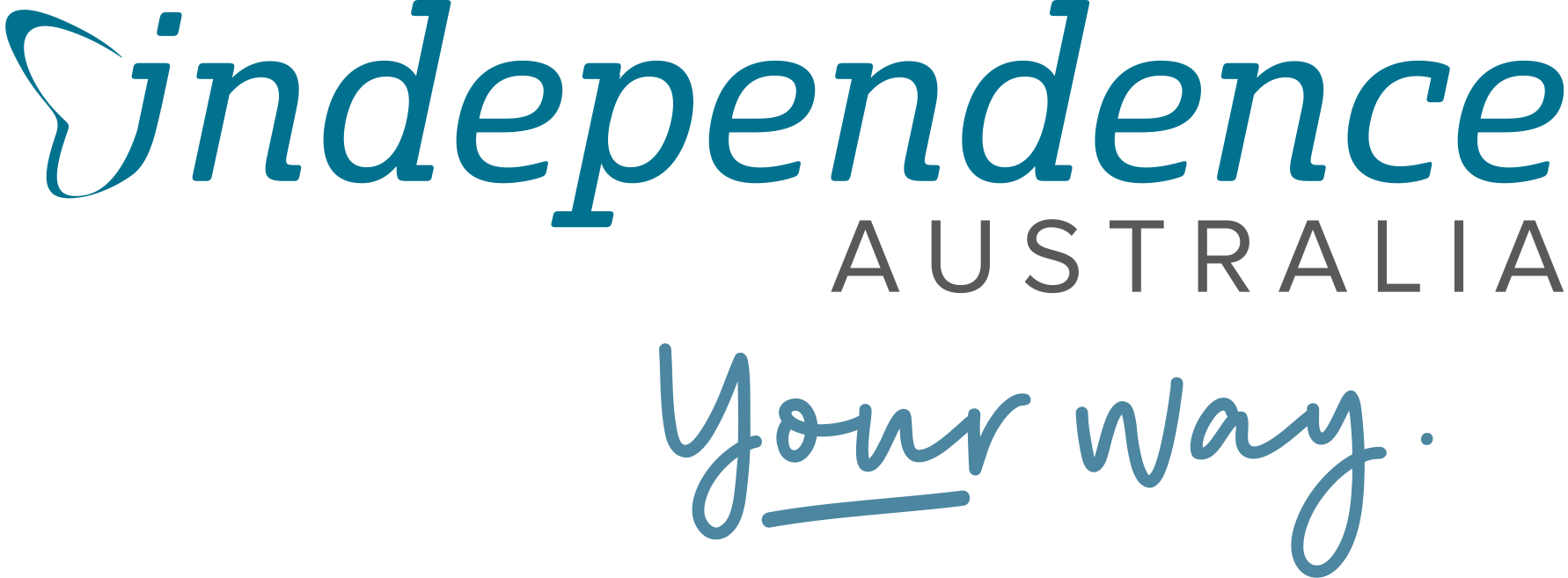How exercise has helped me achieve my goals
Charmaine Idris gives us an insight into how she has designed her exercise routine to maximise agency in her life.
Background
I have an incomplete spinal cord injury which I’ve been managing for 23 years. The area of my injury is at the T7/T8 (thoracic spine) level resulting in Brown Sequard Syndrome. In layman’s terms this means that my spinal cord has been partly damaged but not severed completely (hence the term incomplete).
My injury has resulted in the loss of my ability to sense location, actions and movement (proprioception) as well as the loss of pain and temperature sensation. My right leg has been the most affected by my paraplegia.
I use a manual wheelchair around my home and when I’m being driven somewhere. My motorised scooter is used for longer distances like getting out into the community. For shorter distances and in tight spaces, I’m able to mobilise using a pair of elbow crutches.
Importance of exercise
I started attending the gym and making exercise a priority after the birth of my second child and several years prior to my accident. I was terribly underweight and constantly tired with barely enough energy to work a full-time job and be a hands-on mum. I became smitten with training in a gym and eventually became a certified fitness instructor. My specialty was teaching group fitness classes focussing on strength and toning.
After my accident it felt natural for me to return to the gym. The hard part then was accepting my shortcomings. But over the years, I’ve learnt to accept these and to use effectively what I still do have.

Pilates
Pilates has been the catalyst to me rediscovering how to engage my core and use it as best I can during my daily activities. Unlike most spinal cord injury survivors and due to the nature of my injury, I’m able to use my core satisfactorily. The exercises are supervised by a physiotherapist certified in teaching Pilates. Each exercise is tailored to my specific needs and often adapted accordingly.
Pilates apparatus employs a series of pulleys and springs. Depending on the exercise, these can be adjusted according to the outcome I wish to achieve. Although there are many exercises available, I concentrate on only a specific few during my sessions
Reformer
The reformer improves the strength across both legs with the focus being on leg coordination, good posture and body alignment. My glutes and quadriceps do most of the work while lying in a supine position.
Cadillac
The Cadillac engages my core more effectively while simultaneously stabilising my lower back, keeping it flattened on the surface. Legs are drawn towards my chest and then lowered. A set of pulleys attached to springs ensure that my arms work in tandem to my legs.
Wunda Chair
I do the Wunda Chair to strengthen my hamstrings while being seated in an upright position encouraging me to stabilise my lower back. My legs push the bar (attached to springs) downwards, attempting to touch the floor. The movement is reversed by controlling the upward motion.
Personal Training
I train with a personal trainer twice a week at my local gym. In order for me to get to the different gym equipment, I mobilise using my elbow crutches.
Monday
On Mondays we concentrate on legs. Depending on my PT’s workout plan, I get to use the leg press machine which engages my quadriceps as well as my glutes while building muscles. The leg extension machine strengthens my quadriceps as well as my knee joints.
The hamstring curl machine is my nemesis! The partial damage to my spine has resulted in nerve signals becoming jumbled so that my right leg tends to lengthen instead of pulling my leg back. However, I still work very hard at trying to engage my hamstrings along with my glutes when doing this exercise.
Tuesday
Using a manual wheelchair daily takes its toll over time so my favourite body workout, upper body, happens on a Tuesday! I enjoy using free weights and dumbbells while being flat or seated through a combination of exercises.
The chest fly press opens up my chest muscles and helps to reduce upper back pain, increase my range of motion, and reduce tightness in my upper body. Tricep dips activate the triceps mainly in my upper arm and help with my pushing motion used daily to mobilise with my manual wheelchair.
Additionally, I need to activate my core as I hold my hips off the ground during this exercise. Bicep curls work the muscles of my upper arm and is a great exercise for seeing results in definition and strength.
For my shoulders I use a combination of two pulley machines to work my latissimus dorsi muscles (lats for short). The lat pulldown is a fantastic exercise to strengthen my lats, the broadest muscle in my back, and which promotes good posture and spinal stability.
One other piece of pulley equipment is the back extension machine. This isolation exercise targets the lower back muscles, mostly the erector spinae, the function of which is to straighten my back and provide me with side-to-side rotation.
Swimming
My legs get tangled in the swimming pool and hinder my ability to swim effectively, so in order for me to concentrate on my stroke I have taught myself to use a snorkel to breathe. A set of hand fins assist me further. The snorkel coupled with the hand fins have assisted me tremendously in increasing my endurance, help me relax my core, and takes the pressure off my spine. I like to think that my core is smiling broadly when I’m in the water!
Benefits of exercise
I attended my very first physiotherapy session 19 years after my accident and after my return to Australia. I’ve never looked back since! My perseverance has resulted in visible benefits; an improved walking gait, increased overall strength/endurance, and a core of steel. My consistency with personal training and Pilates sessions have influenced my confidence so that I’ve gained positive outcomes in real life situations.
Since I’m able to stand for short periods of time, I’ve taken this opportunity to use the muscles in my legs to my advantage such as; when preparing my meals, mobilising with my crutches, improving my gait, showering and brushing my teeth, rummaging in my cupboards or the fridge, changing my bed linen, arranging my clothes, and maintaining a more fluid and controlled movement when transferring to or from my wheelchair to name a just a few.
The benefits of having good upper body strength coupled with a strong core and stable back allows me to transfer into and out of my manual wheelchair very many times a day without feeling fatigued. I’m able to reach up and remove or hang my washing on the clothesline. I can lift my groceries onto my knees to transport back to my place after shopping using my motorised scooter. I can reach up and take most grocery items from the shelf in the supermarket.
I mobilise using my wheelchair throughout the day without feeling too exhausted. I’m able to remain upright in my wheelchair without slouching even after extended periods. I can travel long distances on my motorised scooter without compromising my posture.
Exercise has been beneficial in maintaining my strength and tone so that I can continue to live an independent life. More importantly it has empowered my mind and taught me that, as Nelson Mandela once said, “it always seems impossible until it’s done.’’
Charmaine Idris is a paraplegic who self-manages her NDIS funding. Her lived experiences as a paraplegic (23 years) has given her the insight and opportunity to pursue her dream of being an advocate and peer support leader with peak non-profit organisation Queenslanders with Disability Network (QDN) where she has significantly contributed to matters relating people with disabilities (PWD) across a range of important topics that include housing, employment and the NDIS rollout. Working closely with the University of Sydney and with her fellow PWDs, Charmaine has made a valuable contribution in setting up Disability Inclusive Disaster Risk Reduction in Australia (DIDRR Australia). Charmaine believes that her spinal cord injury does not define her lifestyle.
